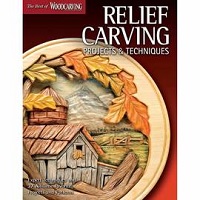NOTES ON THE COLLOTYPE PLATES



Plate I.Old Carved Chest in York Cathedral. The front of a chest of almost similar design, only reversed, is to be seen in South Kensington Museum, which looks from its resemblance both in design and technique to be the work of the same carver, or at least to have been done about the same time. Note the absence of any attempt at elaborate perspective, and the "decorative" aspect of houses, rocks, trees, etc., also the distinctive treatment of the Knight and Princess who appear in the picture several times, representing various incidents of the story.
Plate II.Figure from the Tomb of Henry IV in Canterbury Cathedral. This figure is one of the corner ornaments on the canopy. The whole of the upper structure is of wood, painted in colors with parts picked out in gold. [266]
Plate III.Aisle Roof, Mildenhall Church, Suffolk. This is one of the many beautiful carved roofs which abound in Norfolk and Suffolk. The nave roof is enriched with carvings of angels with wings outspread.
Plate IV.Nave Roof, Sall Church, Norfolk. This is another very beautiful timber roof showing the union of practical carpentry with carving to perfection.
Plate V.Portion of a Carved Oak Panel. The Sheepfold. The other part is shown in Plate VI, as, owing to the proportion of this panel and the necessity for keeping the scale of the plates as large as possible, it has been divided and shown in two portions. It was begun without any premeditated intention as to use, the sloping end being the shape of the board as it came into the author's hands, the other end being sloped off to match it.
Plate VI.Portion of a Carved Oak Panel. The Sheepfold. See description of Plate V. [267]
Plate VII.Preliminary Drawing of a Lion for Carving. This plate is, as explained in the text, from a drawing by Philip Webb, the well-known architect. It was done by him to explain certain facts about the pose of a lion when the author was engaged in carving the book covers which are shown in Plates VIII and IX.
Plates VIII and IX.Book-Covers carved in English Oak. These were done by the author for one of the "Kelmscott Press" books, Tale of Troy, at the instance of Mr. Cobden-Sanderson. The relief is very slight, and is rather exaggerated by the light and shade of the photograph. The carved portion only of these covers is shown, the size of which is 11-1/2 x 5-3/4 ins.
Plate X.Book-Covers carved in English Oak. These were done by the author for Mr. F. S. Ellis's translation of Reynard the Fox. The size of the carved part is 8-3/4 x 5-1/4 ins.
Plate XI.Carvings from Winchester Cathedral. This plate is from sketches [268] made by the author at Winchester Cathedral. The upper one is a spandrel piece from the traceried arcading of the stalls. The lower one is a part of one of the carved Miserere seats. The spandrel carving is pierced; that is, has the ground cut right through. The other piece is elaborately undercut.
Plate XII.Carving from Choir-Screen, Winchester Cathedral. This plate is from a sketch done for the purpose of noting the general effect of a large mass of carved foliage with particular reference to the distribution of lighted surfaces in the design.
Plate XIII.Font Canopy, Trunch Church, Norfolk. The plate gives the upper portion only of this beautiful canopy; it is supported upon six posts richly carved on all sides, of which there are five to each post. The height of the whole canopy is about fifteen or sixteen feetit presumably dates somewhere toward the end of the fourteenth century or beginning of the fifteenth.
Plate XIV.Designs for Carving, by [269]
Philip Webb. This plate gives two examples of designs for carving by Philip Webb. The upper one is part of a richly carved cornice which was done for a chimney-piece; the carving was executed by Mr. Laurence Turner, from whom the author got his first lesson in wood-carving. The other example is a design on paper for carving to be done in oak. This was carried out in the paneling of the dining-room at Clouds House, Salisbury, and looked exceedingly effective. Much of the articulation on the surface of the leaves, it will be noticed, is got by sharp facets produced by the intersection of gouge cuts.
Plate XV.Leg of a Settle carved in English Oak. This was begun by the author as forming part of a large oak seat or "settle," but has never been completed. The wood out of which it is carved came out of an old house at Tewkesbury and was full of cracks which were filled up with slips of oak glued in and carved over.
Plate XVI.Pew Ends in Carved Oak, Brent Church, Somersetshire. The three [270] bench ends shown in this plate are from Brent Church, Somersetshire. Although rude in execution, they are extremely effective in design. The bounding form of the molded edges and gracefully shaped top are worth noticing; the whole evidently the outcome of a nice and inherited sense of design, without any particular technical knowledge or experience. The termination of the finials was unfortunately omitted in the photograph, hence the abrupt line at the top.

|
INFORMATION ABOUT HOW TO MAKE MONEY FROM WOOD CARVING |